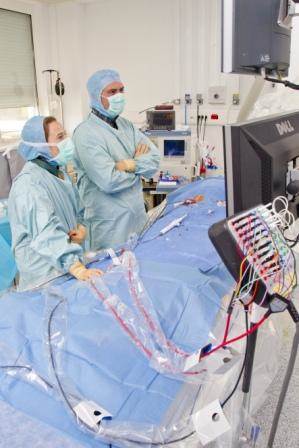By Dee Rapposelli

Thoracic facet joints are a source of pain for about 40% of patients who complain of chronic mid or upper back pain,1 but effective diagnosis and treatment of chronic, intractable thoracic pain has been challenging.2
Evidence supporting the effectiveness of nerve blocks, and especially radiofrequency denervation, has been limited,1 but a team of Swedish pain specialists may have adapted the technique for thoracic facet joints (or zygapophyseal joints), which provides pain relief comparable to that achieved for cervical and lumbar facet joints, according to results from a study recently published in Pain Medicine.2
Inter- and intra-individual variability in the innervation of thoracic facet joints make application of diagnostic blocks and radiofrequency denervation more challenging compared with similar treatment of cervical and lumbar facet joints.3,4 The Swedish team, led by Johan Hambraeus, MD, therefore developed a technique whereby double injections of bupivacaine are placed (1 lateral, the other ventral) at each level of the transverse process, and multiple lesions are made on each nerve via radiofrequency denervation. The team had been successfully using the technique at their specialty pain clinic, Smartkliniken Eques Indolor in Vallentuna, Sweden, for the last decade. They went on to perform an observational study that compared quality-of-life outcomes in patients who had undergone the thoracic facet joint radiofrequency denervation technique with that of patients who had undergone lumbar and cervical facet joint radiofrequency denervation per Spine Intervention Society guidelines.
A total of 178 patients underwent radiofrequency denervation of the lumbar facet joints, 55 of the cervical facet joints, and 82 of the thoracic facet joints. A diagnosis of thoracic facet joint pain was made if, after the novel nerve block technique, pain relief of ≥80% was achieved with 2 or more nerve blocks at the same level, and when ≤4 nerves were involved. Diagnostic medial branch blocks were performed in patients with cervical or lumbar pain and the same diagnostic criteria applied. A positive diagnosis marked eligibility for radiofrequency denervation.
Whereas radiofrequency denervation was performed in accordance with Spine Intervention Society guidelines in patients with cervical and lumbar pain, the Swedish team used a technique whereby the needle was positioned medially, heated to 80°C, withdrawn, and then positioned slightly lateral to the previous position. A new lesion was made either laterally or medially, depending on whether the temperature at the new position was >60°C or <45°C. The procedure was repeated for each nerve until the lateral-cranial tip of the transverse process was reached. Health-related quality of life was measured using the EuroQol 5-Dimensions questionnaire, which rates mobility, self-care, usual activities, pain/discomfort, and anxiety/depression.
The EuroQol 5-Dimensions scores were compared for radiofrequency denervation performed at the cervical (n = 55), thoracic (n = 82), and lumbar (n = 178) levels.
Mean EuroQol 5-Dimensions scores were found to be equivalent across treatment groups at 3, 6, and 12 months follow-up, with effective pain relief in ≥65% of patients at 3 months. Improvement in health-related quality of life was maintained for ≥12 months posttreatment in 49% of patients in the thoracic group, 51% in the cervical group, and 47% in the lumbar group.
The results of this observational study provide preliminary insight into successful use of nerve blocks and radiofrequency denervation for thoracic facet joint pain. “Even though these results have to be confirmed by other groups, the study strengthens the evidence for interventional pain management as means for diagnosis and treatment of chronic thoracic spinal pain,” Professor Hambraeus told Clinical Pain Advisor. He noted that patients in the study had endured pain for more than 10 years before seeking help, and that results from this study indicate that “it is never too late to help suffering chronic pain patients.” He added that measuring health-related quality of life was superior to measuring pain. “With this global measurement, we could see the significant improvement…that by treating the pain, one can improve the health-related quality of life.”
Summary and Clinical Applicability
A nerve block and radiofrequency denervation technique developed by a team of Swedish pain specialists for diagnosis and treatment of thoracic facet joint pain may be as effective as the standard nerve block/radiofrequency denervation technique used for cervical and lumbar facet joint pain.
Findings need to be confirmed; however, the results of this observational study present promise for overcoming obstacles to successful treatment of chronic, intractable thoracic facet joint pain. If results can be replicated in larger, controlled studies, they may broaden guidelines (namely, those of the American Society of Interventional Pain Physicians) regarding the diagnosis and management of facet joint pain.
Limitations and Disclosures
This was a nonrandomized, observational study that did not include a placebo-treated control group.
Professor Johan Hambraeus and study coauthor Kjerstin S. Hambraeus, RN are stock owners of Smartkliniken Eques Indolor AB.
References
- Manchikanti L, Abdi S, Atluri S, et al. An update of comprehensive evidence-based guidelines for interventional techniques in chronic spinal pain. Part II: guidance and recommendations. Pain Physician. 2013;16(2 Suppl):S49-283.
- Hambraeus J, Hambraeus KS, Persson J. Radiofrequency denervation improves health-related quality of life in patients with thoracic zygapophyseal joint pain [published online June 17, 2017]. Pain Med. doi: 10.1093/pm/pnx142
- Chua WH, Bogduk N. The surgical anatomy of thoracic facet denervation. Acta Neurochir (Wien). 1995;136(3-4):140-144.
- Manchikanti KN, Atluri S, Singh V, et al. An update of evaluation of therapeutic thoracic facet joint interventions. Pain Physician. 2012;15(4):E463-E481.
Article from Clinical Pain Advisor https://www.clinicalpainadvisor.com/back-spine-pain/thoracic-facet-joint-pain-may-be-effectively-treated-with-radiofrequency-denervation/article/673671/
